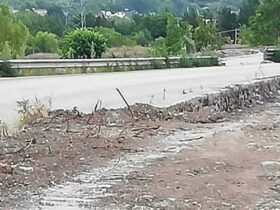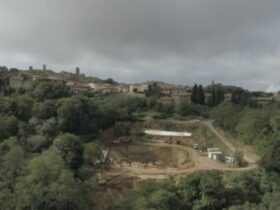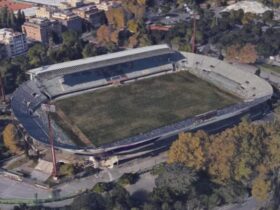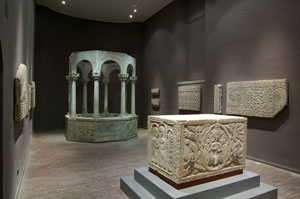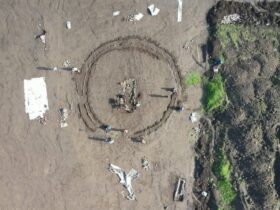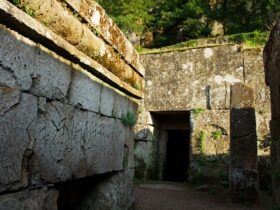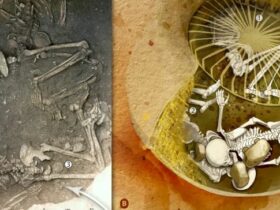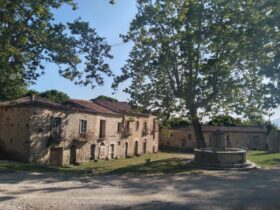AA.VV. A multidisciplinary study of archaeological grape seeds.
We report here the first integrated investigation of both ancient DNA and proteins in archaeobotanical samples: medieval grape (Vitis vinifera L.) seeds, preserved by anoxic waterlogging, from an early medieval (seventh– eighth century A.D.) Byzantine rural settlement in the Salento area (Lecce, Italy) and a late (fourteenth–fifteenth century A.D.) medieval site in York (England).
Pyrolysis gas chromatography mass spectrometry documented good carbohydrate preservation, whilst amino acid analysis revealed approximately 90% loss of the original protein content.
In the York sample, mass spectrometry-based sequencing identified several degraded ancient peptides.
Nuclear microsatellite locus (VVS2, VVMD5, VVMD7, ZAG62 and ZAG79) analysis permitted a tentative comparison of the genetic profiles of both the ancient samples
with the modern varieties. The ability to recover microsatellite DNA has potential to improve biomolecular analysis on ancient grape seeds from archaeological contexts.
Although the investigation of five microsatellite loci cannot assign the ancient samples to any geographic region or modern cultivar, the results allow speculation that the material from York was not grown locally, whilst the remains from Supersano could represent a trace of contacts with the eastern Mediterranean.
Pyrolysis gas chromatography mass spectrometry documented good carbohydrate preservation, whilst amino acid analysis revealed approximately 90% loss of the original protein content.
In the York sample, mass spectrometry-based sequencing identified several degraded ancient peptides.
Nuclear microsatellite locus (VVS2, VVMD5, VVMD7, ZAG62 and ZAG79) analysis permitted a tentative comparison of the genetic profiles of both the ancient samples
with the modern varieties. The ability to recover microsatellite DNA has potential to improve biomolecular analysis on ancient grape seeds from archaeological contexts.
Although the investigation of five microsatellite loci cannot assign the ancient samples to any geographic region or modern cultivar, the results allow speculation that the material from York was not grown locally, whilst the remains from Supersano could represent a trace of contacts with the eastern Mediterranean.
Autori: Enrico Cappellini & M. Thomas P. Gilbert & Filippo Geuna & Girolamo Fiorentino & Allan Hall & Jane Thomas-Oates & Peter D. Ashton & David A. Ashford & Paul Arthur & Paula F. Campos & Johan Kool & Eske Willerslev & Matthew J. Collins.
Lo studio intero si trova nell’allegato, vai
Ti è piaciuto questo articolo?
Tanto0
Abbastanza0
Noioso0
Per niente0

